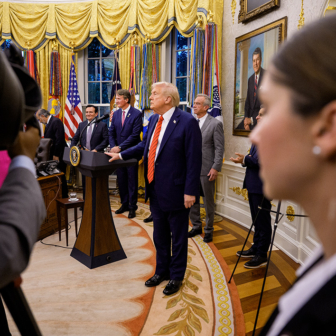Health minister Greg Hunt’s private health insurance announcement might have promised to make the system “simpler and more affordable” but it delivered more for private health insurers’ bottom lines than for Australians’ budgets. It also highlighted the contorted, confused and controversial logic that underpins the government’s push for taxpayers to finance a two-tiered healthcare system.
Growing dissatisfaction with private health insurance has been evident for some time now, and it shouldn’t come as a surprise. Premiums have increased 54.6 per cent since 2009, with the average increase in 2017 at 4.9 per cent, 3.3 times the rate of general inflation in the preceding twelve months. Simultaneous cuts to the private health insurance rebate (which decreases if average premiums increase by more than the CPI) mean that the cost of the average policy this year rose by 6.1 per cent. People are increasingly finding that they are substantially out-of-pocket when they use the private hospital system and that ancillary cover is lagging behind premium increases and the growing costs of services.
Small wonder that complaints to the Private Health Insurance Ombudsman have increased significantly, or that people have been dropping or downgrading their insurance policies to cope with the rising cost of energy, housing, food, transport, education and other basic living expenses.
While the larger health insurance funds have been reaping substantial profits, their memberships are slipping and changing in ways that will soon affect profit margins. Healthy young people, whose contributions subsidise the cost of older members, are doing their financial accounting, recognising that they have other priorities, and leaving.
Consumer and industry concerns drove the government to establish a Private Health Ministerial Advisory Committee in September 2016, but in both composition and scope it was always going to be more focused on the needs of the insurance funds than those of consumers. Last week’s announcement confirmed that impression. These are hardly the major reforms that the government had promised, and there is little evidence that they will have any real impact on consumer costs. Industry will be mollified in the short term, but may find their members even more suspicious of the value of their products.
The central proposition of the announcement is simple: more young people must purchase private health insurance in order to improve the overall “risk pool.” Insurers will be allowed to discount hospital cover premiums for those aged eighteen to twenty-nine by 2 per cent annually, up to a maximum of 10 per cent. The discount phases out when people turn forty. In reality, this creates only a very small incentive — perhaps as little as 70 cents a week — for young people who are already saddled with education debts, underemployment and high housing costs and who think that, healthwise at least, they are invincible.
Industry representatives believe the change will attract 300,000 new policy holders. (They need at least 50,000 extra members to cover the cost of the new incentive; otherwise it will be passed on via higher premiums to older members.) Others are more sceptical, and one went as far as describing it as a “rip-off for millennials” that will entrench people in a “two-tier” system earlier in life.
The option of full cover for mental health treatment in a hospital with no waiting period has also been touted by the government as a benefit for young people. But it’s a benefit that can only be used if the policy holder (presumably in urgent need of mental healthcare) knows it’s available, has the money to purchase and maintain it (because this is a once-only offer), and is able to access private in-patient care. Health policy analyst Stephen Duckett has suggested that this change, which doesn’t cover day-only mental healthcare, was a backroom compromise to avoid the more serious option of banning mental health exclusion clauses.
Some young people are annoyed by the decision to end insurance cover for alternative and complementary therapies. They claim that these are the very treatments they want and a key reason why they purchase private health insurance. But the decision to stop subsidising seventeen “natural therapies” is a good one: it makes no sense for the government to subsidise therapies for which there is no clear evidence. Natural therapies are widely used, and not just by young people — they now comprise the fifth-most-common claim on extras cover, with a growth rate of almost 1900 per cent over the past twenty years. Yet none of them would meet the benchmarks for effectiveness required of treatments provided by the Pharmaceutical Benefits Scheme or Medicare.
This decision does represent a reversal by both the government and the insurers, however, so it will be interesting to see the extent to which it survives the inevitable lobbying campaign against it. In the past, insurers have argued that these are preventive treatments and removing them would place a strain on public hospitals. And the Turnbull government initially rejected a recommendation made in 2015 to abolish the rebate for these treatments, claiming the Labor-commissioned review was part of a “raid” on private health insurance rebates, and would not achieve significant savings.
Making headlines after the announcement was the government’s quick response to the insurers’ push to reduce the rising costs of implanted medical devices. Health fund members have been paying up to five times more than necessary for devices used in private surgery, partly because of the failure to update the Prostheses List. The government has announced an agreement with the Medical Technology Association of Australia to lower the price of these medical devices from 1 February next year, a move expected to save insurers $300 million (some $100 million of which goes to the government) in the first year, rising to $1 billion over four years. It remains to be seen whether all these savings will be passed on and how quickly that will happen.
The industry has said that every $200 million in reduced prostheses costs will reduce premium increases by one percentage point, but no fund has yet guaranteed that next April’s regular rise in premiums will be less than 4 per cent. Moreover, the ultimate choice of prostheses lies with the surgeon, with few patients in a position to argue about the selection and price of their artificial hip or knee joint, or their lens for cataract surgery. Prosthesis costs vary shockingly and inexplicably: for a knee replacement, for example, they can vary from $5000 to $19,000. Private hospitals may look to replace their lost profit on prostheses with increased bed-day charges. And so, despite the proposed cost reductions, some patients could still find they face substantial out-of-pocket costs for this surgery.
Out-of-pocket costs for consumers have been rising mainly because an increasing number of people have purchased (often unwittingly) cheaper policies that entail excess payments, deductibles and exclusions. The government seems intent on compounding this problem by allowing an increase in the maximum excess (from $500 to $750 for singles and from $1000 to $1500 for couples and families). The health minister’s media release said, with no apparent irony, “We know that many people would like to be able to select a higher excess in exchange for lower premiums.” It’s likely, though, that the only people who will benefit from this provision are singles earning more than $80,000 and families with incomes of $180,000 or more who don’t have hospital cover and who, for the first time, may see insurance as a cheaper option than paying the Medicare Levy Surcharge.
The financial implications of households’ decisions about private health insurance are increasingly hard to predict. The government has promised greater simplicity and transparency, but it’s not clear exactly how the new requirement for policies to be categorised as either gold, silver, bronze or basic will help. This system will provide some sort of alert that a gold policy costs more and delivers more benefits than a basic policy, but people will still have to read the fine print. The promised upgrade of the privatehealth.gov.au website to make it easier to compare insurance products will not help those least able to make these checks.
Consumer groups and policy wonks have argued that these reforms are unlikely to slow the increase in premium costs significantly and will encourage more low-value, junk policies. An estimated 13 per cent of policies currently on the market fall into this category and more than 560,000 Australians have such policies.
It is foolish economics and tortured logic to allow junk policies to attract the full private health insurance rebate and yet offer only treatment in a public hospital. This is happening despite claims (not substantiated) that private health insurance relieves the pressure on public hospitals, and even as insurance funds are campaigning to prevent public hospitals from attracting private patients. Moves are also afoot to limit how private insurance can be used to access care in public hospitals.
A number of other issues, including equity and out-of-pocket costs, didn’t make it into the announcement. True, insurers will now be able to offer cover for the transport and accommodation costs incurred by people in rural areas who need to travel for private care — but only if they have been wise enough and well-heeled enough to purchase this cover before it is needed.
Out-of-pocket costs — which are currently being investigated by a Senate committee and should probably have been at the top of the action agenda — have been pushed on to yet another committee (a sure sign it’s too hot for this government to handle) and there will be more committee work to look at risk equalisation and funding mechanisms for rehabilitation and day-only mental health care.
Most telling, though, is the government’s rhetoric around the announcement. For those concerned about the erosion of Medicare’s universality and the declining federal support for public hospitals, it provides some chilling insights. Greg Hunt continues to assert that private health insurance is “a fundamental article of faith for the vast majority of Australians and for the Coalition” and “is fundamental to choice, it’s fundamental to the ability of Australians to have peace of mind.”
The modus operandi appears to be to starve the public system of funds and use fear of longer waiting times to drive more people to the private sector. This is just what insurers want. The head of one large fund has a vision of a future in which 70 per cent of the population have private health insurance (that’s a level not seen since the introduction of Medibank).
The only healthcare cost that is never up for scrutiny is the burgeoning federal support for private health insurance, estimated at $6.43 billion this financial year ($10.64 billion if forgone taxation revenue is included). That goes to support the healthcare costs of just 46.1 per cent of the population — for the most part, people whose health and finances are better than average.
Australian healthcare is going backwards. We watch aghast as President Trump attempts to tear down Obamacare, but we have been slow to see how our own healthcare system has been eroded, has become increasingly inefficient and inequitable and has declined in international rankings because it is two-tiered. To date, the focus of government policy has been limited to the cost of purchasing private health insurance when what is needed is work to address the cost — to individuals, the healthcare system, and society — of using it. ●




